
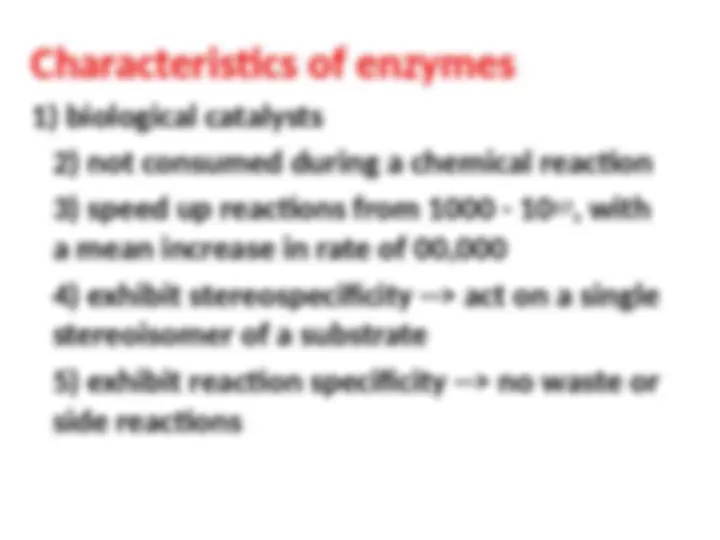
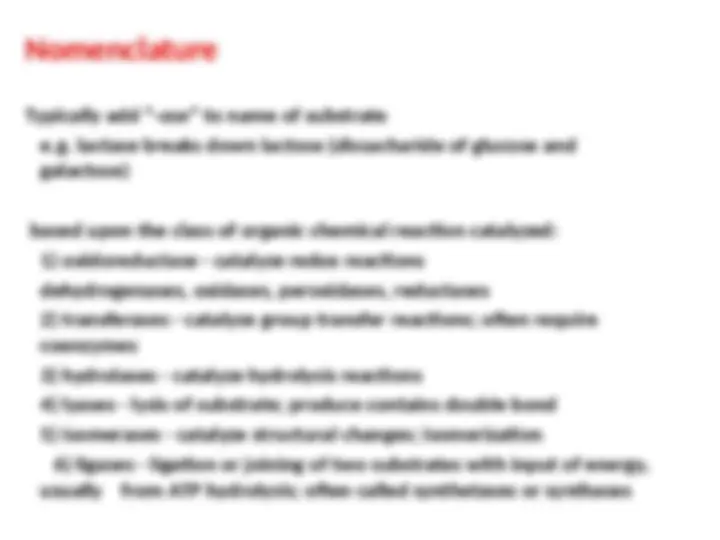
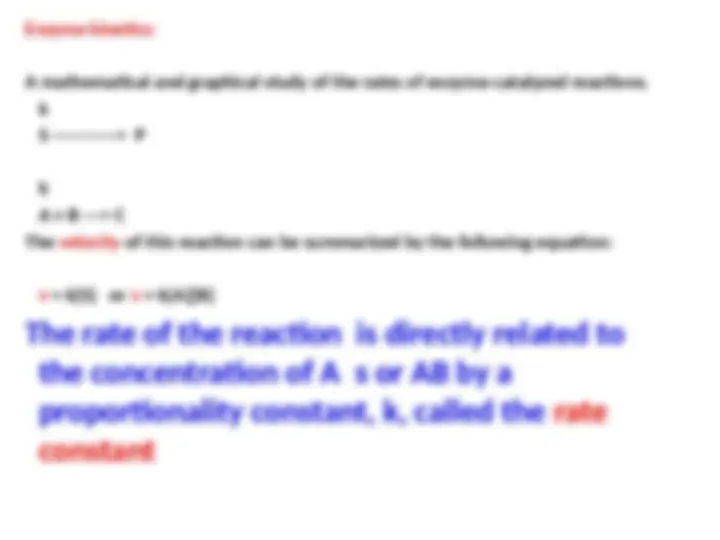
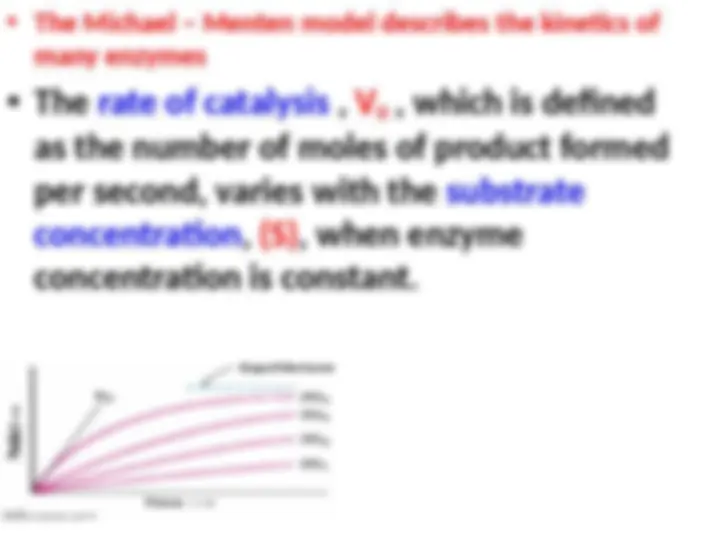
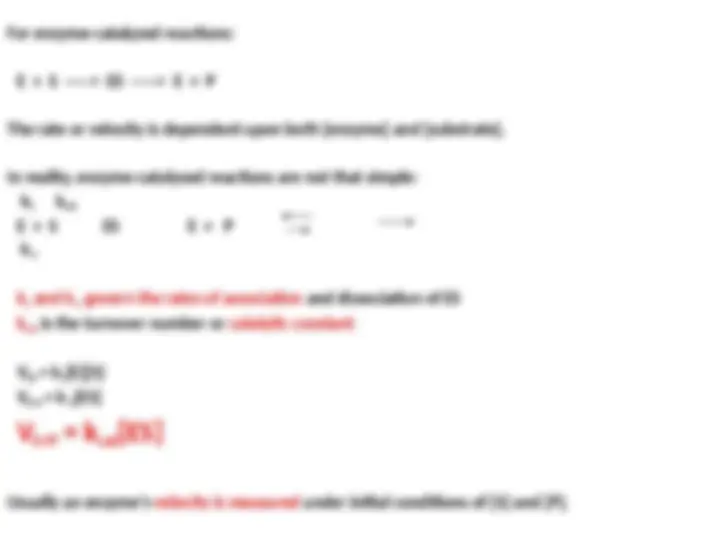
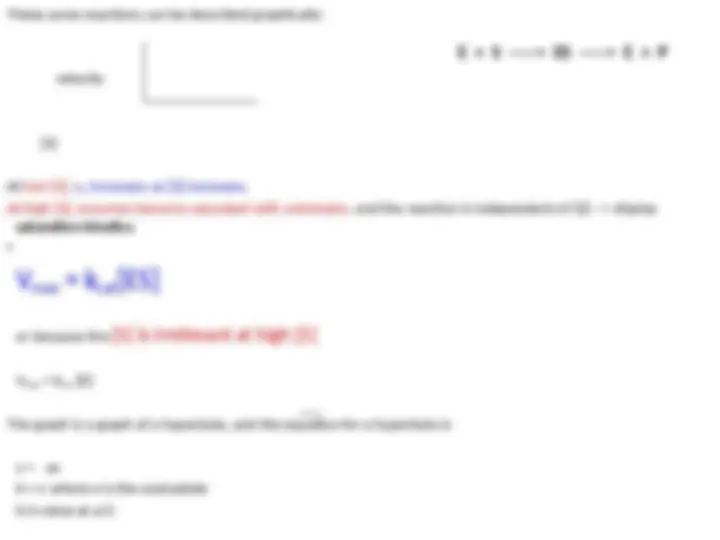

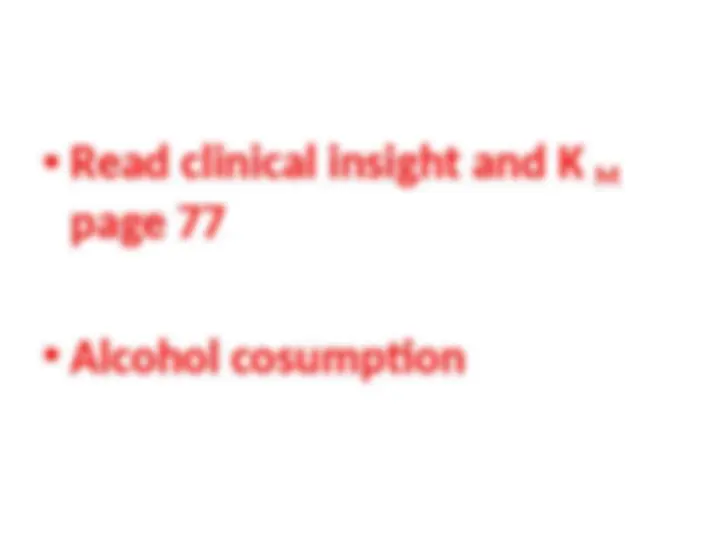
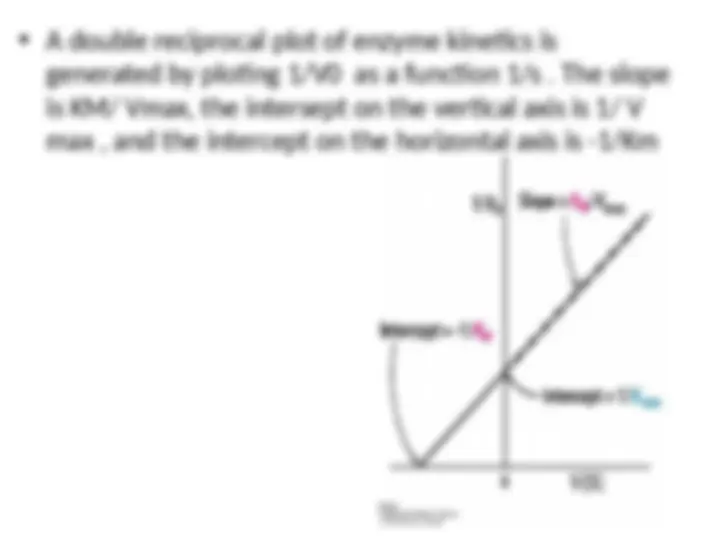
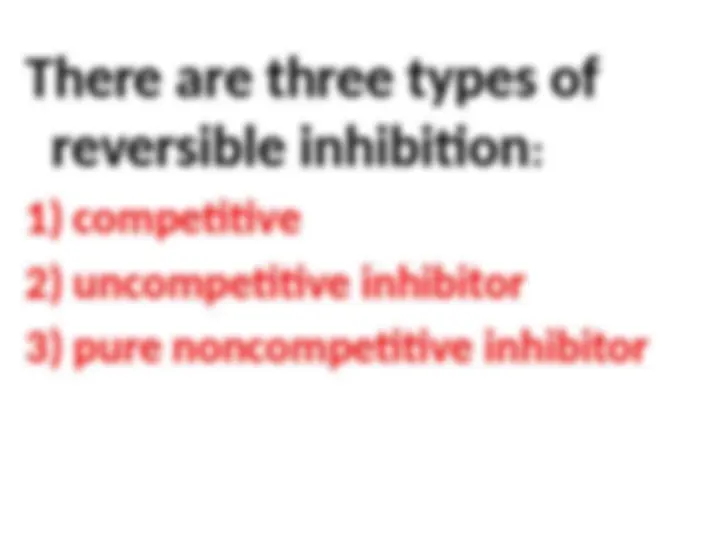
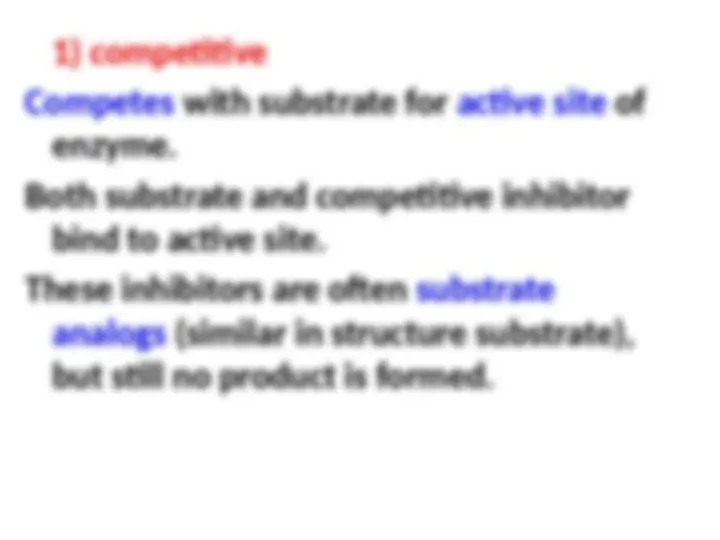
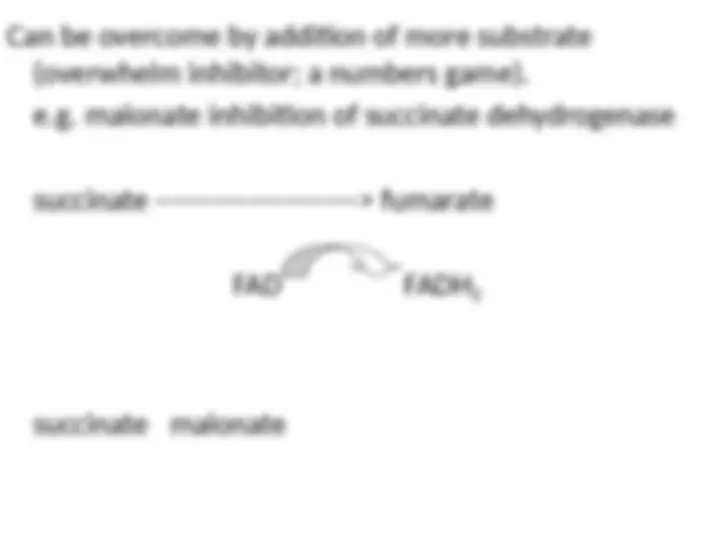


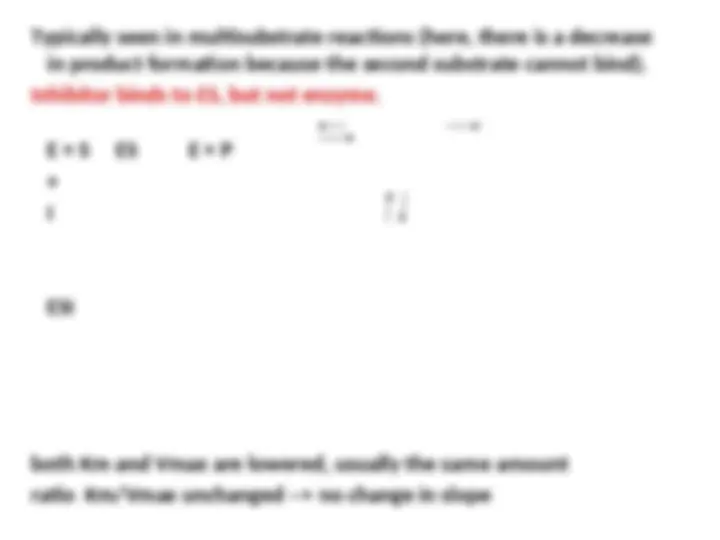

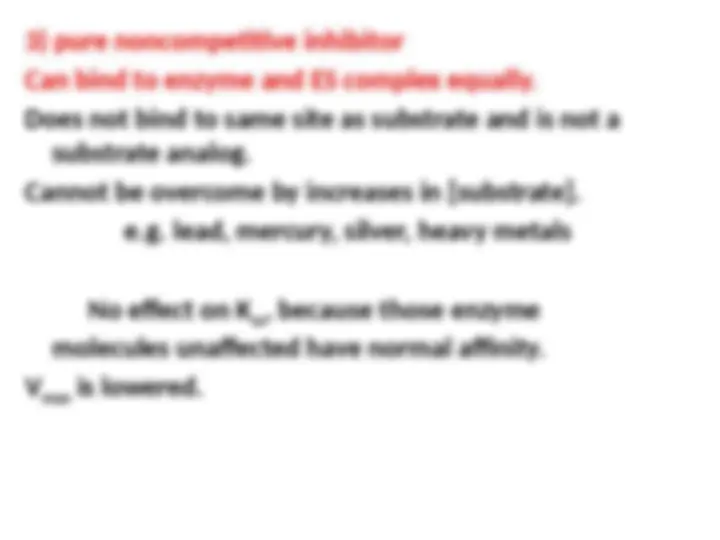
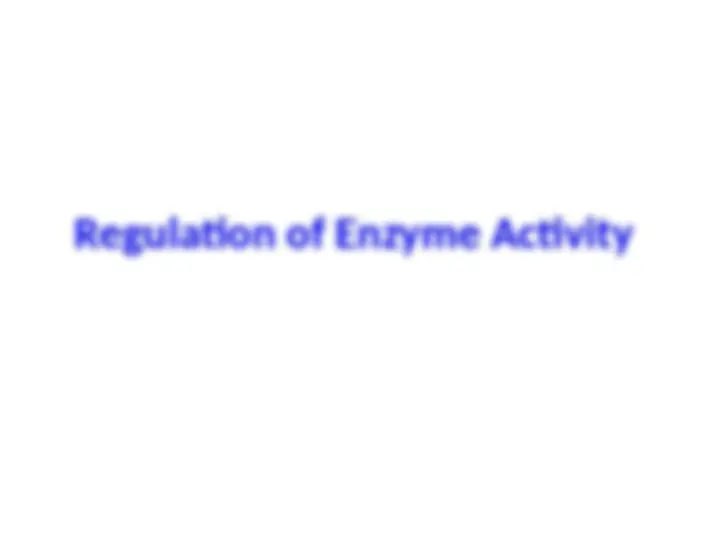
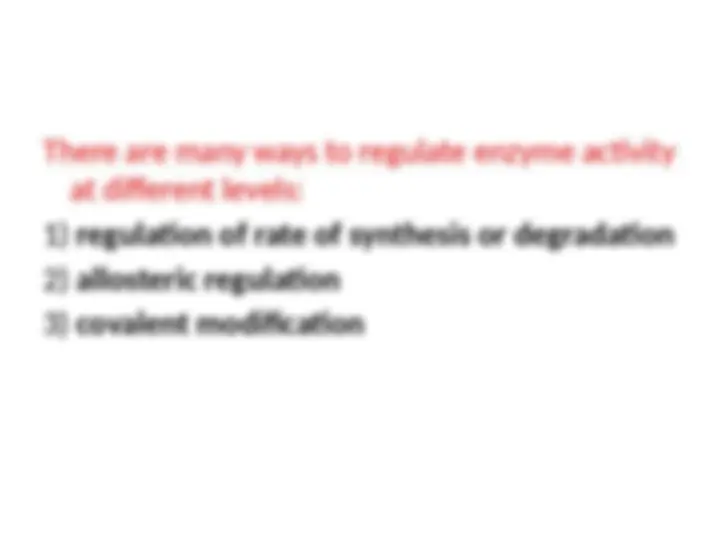
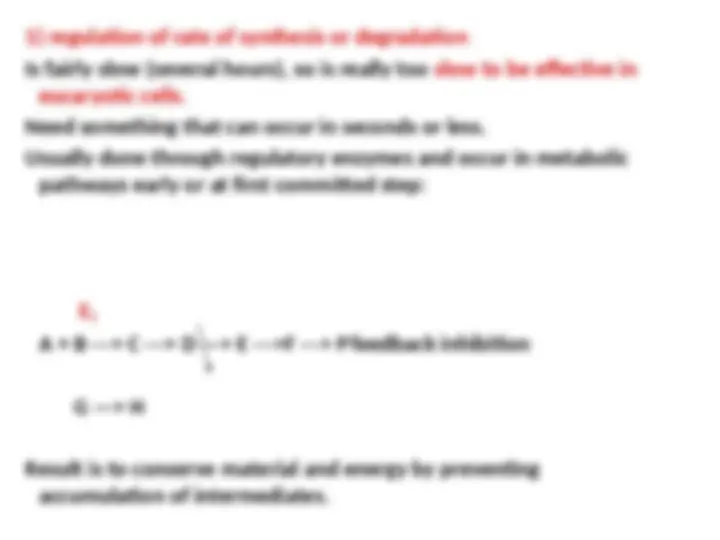
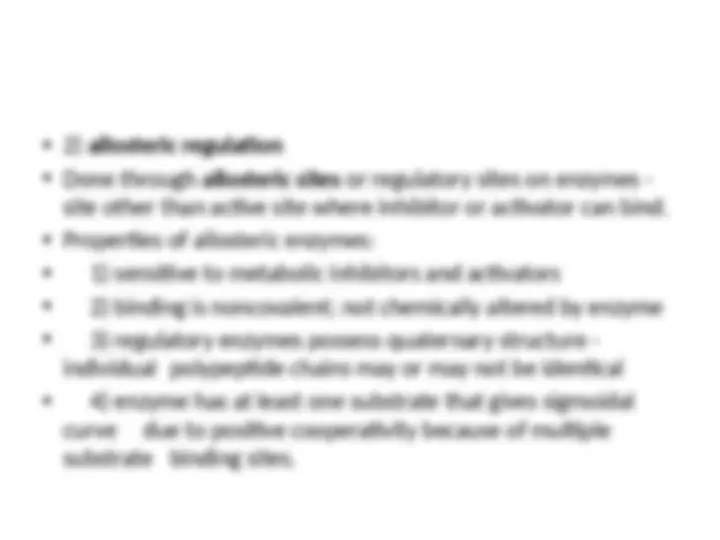
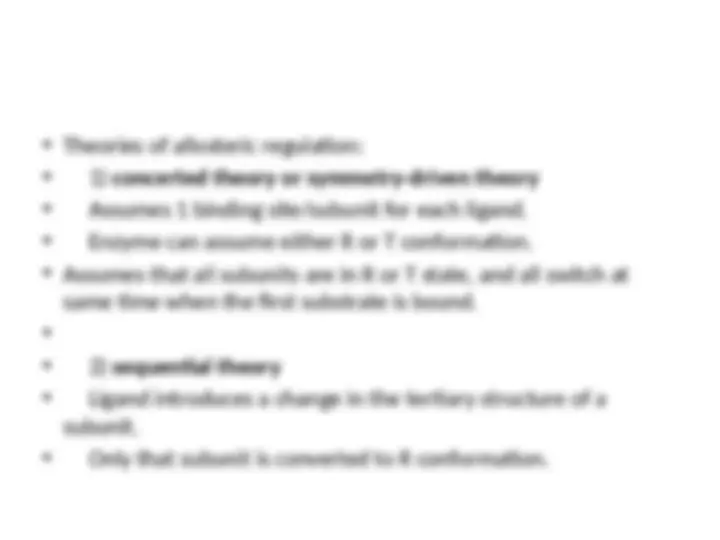
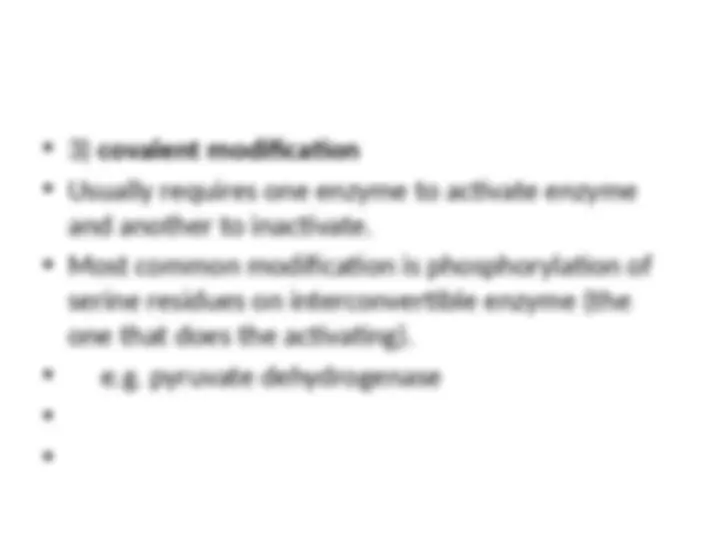


Study with the several resources on Docsity

Earn points by helping other students or get them with a premium plan


Prepare for your exams
Study with the several resources on Docsity

Earn points to download
Earn points by helping other students or get them with a premium plan
Community
Ask the community for help and clear up your study doubts
Discover the best universities in your country according to Docsity users
Free resources
Download our free guides on studying techniques, anxiety management strategies, and thesis advice from Docsity tutors
An introduction to the key concepts of enzyme kinetics and regulation, including the characteristics of enzymes, enzyme nomenclature, enzyme kinetics equations, and various types of enzyme inhibition. It also covers the importance of enzyme affinity and reaction kinetics.
Typology: Study notes
1 / 31

This page cannot be seen from the preview
Don't miss anything!
























Kinetics and Regulation
Nomenclature Typically add “- ase ” to name of substrate e.g. lactase breaks down lactose (dissacharide of glucose and galactose) based upon the class of organic chemical reaction catalyzed:
Enzyme kinetics: A mathematical and graphical study of the rates of enzyme-catalyzed reactions. k S -----------> P k A + B ---> C The velocity of this reaction can be summarized by the following equation: v = k[S] or v = k[A][B] The rate of the reaction is directly related to the concentration of A s or AB by a proportionality constant, k, called the rate constant
These same reactions can be described graphically: velocity [S] At low [S], vo increases as [S] increases. At high [S], enzymes become saturated with substrates, and the reaction is independent of [S] --> display saturation kinetics.
Substituting our equation parameters, Vo = Vmax[S] Km + [S] Michaelis-Menten equation Different enzymes reach Vmax at different [S] because enzymes differ in their affinity for the substrate or Km.
Enzyme-substrate affinity and reaction kinetics are closely associated
o
max
m K m is a measure of enzyme affinity K m = k
k 1 reflection of association and dissociation of ES a small K m (high affinity) favors E + S ----> ES a large K m (low affinity) favors ES -----> E + S meaning that the lower the Km, the less substrate is needed to saturate the enzyme.
Alterations in enzyme activity: Enzyme inhibition Molecule that binds to enzyme and interferes with its activity to prevent either: